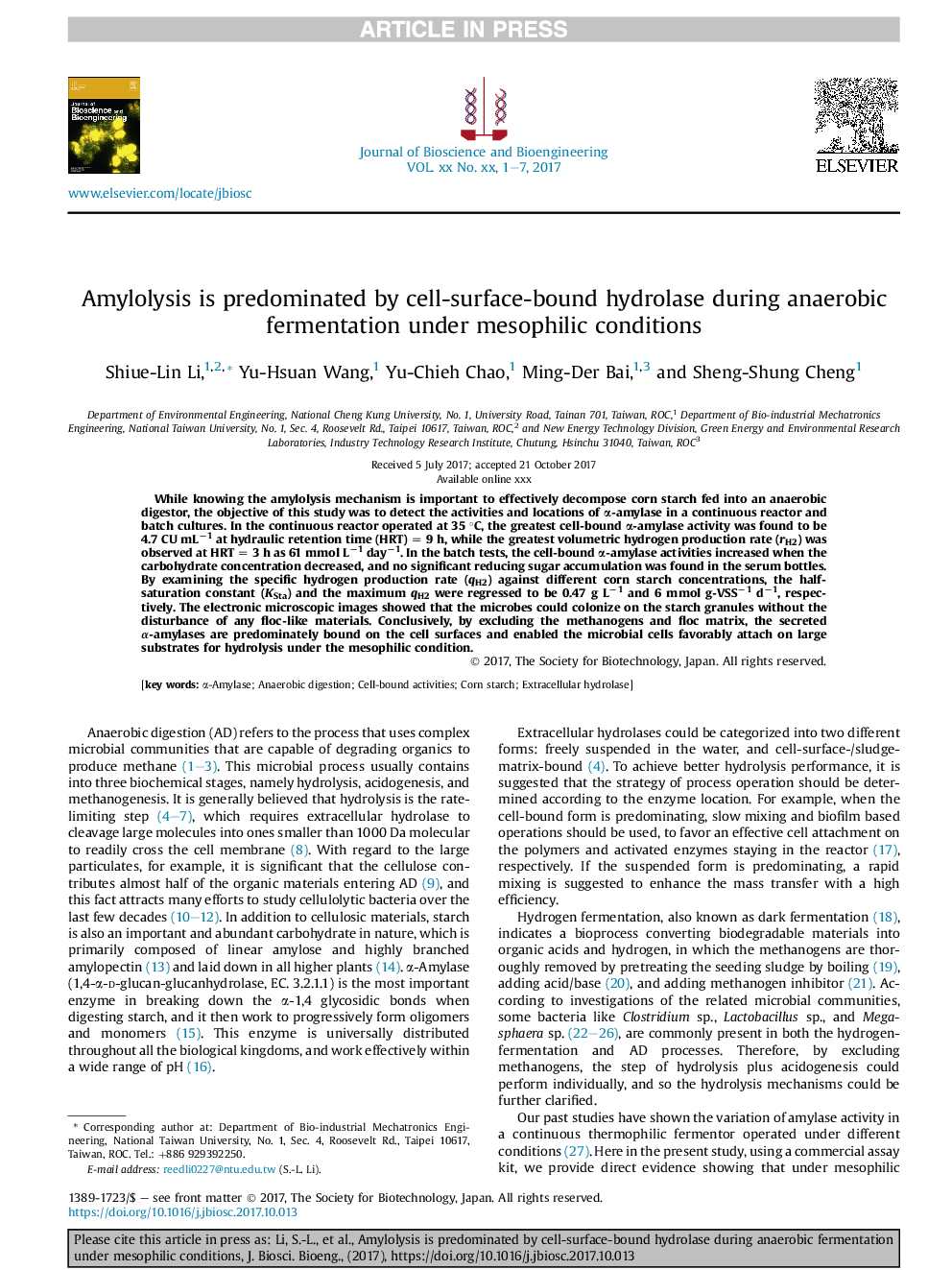| Article ID | Journal | Published Year | Pages | File Type |
|---|---|---|---|---|
| 6489894 | Journal of Bioscience and Bioengineering | 2018 | 7 Pages |
Abstract
While knowing the amylolysis mechanism is important to effectively decompose corn starch fed into an anaerobic digestor, the objective of this study was to detect the activities and locations of α-amylase in a continuous reactor and batch cultures. In the continuous reactor operated at 35 °C, the greatest cell-bound α-amylase activity was found to be 4.7 CU mLâ1 at hydraulic retention time (HRT) = 9 h, while the greatest volumetric hydrogen production rate (rH2) was observed at HRT = 3 h as 61 mmol Lâ1 dayâ1. In the batch tests, the cell-bound α-amylase activities increased when the carbohydrate concentration decreased, and no significant reducing sugar accumulation was found in the serum bottles. By examining the specific hydrogen production rate (qH2) against different corn starch concentrations, the half-saturation constant (KSta) and the maximum qH2 were regressed to be 0.47 g Lâ1 and 6 mmol g-VSSâ1 dâ1, respectively. The electronic microscopic images showed that the microbes could colonize on the starch granules without the disturbance of any floc-like materials. Conclusively, by excluding the methanogens and floc matrix, the secreted α-amylases are predominately bound on the cell surfaces and enabled the microbial cells favorably attach on large substrates for hydrolysis under the mesophilic condition.
Related Topics
Physical Sciences and Engineering
Chemical Engineering
Bioengineering
Authors
Shiue-Lin Li, Yu-Hsuan Wang, Yu-Chieh Chao, Ming-Der Bai, Sheng-Shung Cheng,
